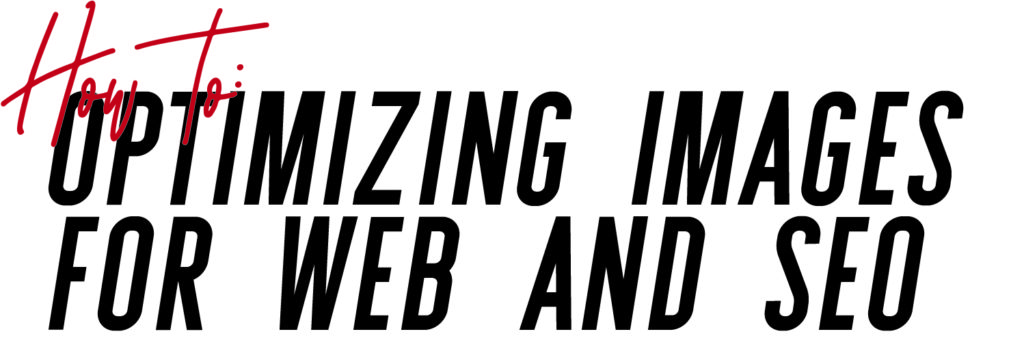
As anyone looking into the world of SEO, you are probably aware that there are many things you can do to increase your ranking on search engines. Optimizing images for web is one simple thing you can do to create better content for the web and search engines to read. Lucky for you, I have provided an SEO strategy to avoiding one of the most costly mistakes in your search engine optimization. Images are an absolute vital part of creating beneficial on page SEO and content. However, many users don’t know how to choose and prepare an image that helps them instead of hurts them. Here is how to ensure your images are working for you, not against you:
Choosing Relevant Images
- The first step to optimizing images to be sure they are helping your SEO, is to choose a relevant photo. Don’t just use a photo because it’s pretty or it will get you the best rank in SEO, be thoughtful and use an image that is relevant to your unique content. When you use a relevant image in your content, you are helping search engines to better understand the information on your page. Keep in mind that the context surrounding the image will have a huge impact on how well you perform on a search engine as well.
- Suggested best practices for optimizing images:
- Use original images that are unique, intriguing, and memorable.
- Mix up the types of images you use, like memes, charts, and photos.
- Suggested best practices for optimizing images:
Image Formatting for Web
- To ensure your image is cohesive with the way search engines crawl a page you should check on the formatting. A great resource that will help you better understand formatting can be found here. For a quick overview; pay attention to file name, file type (.jpg, .png, .svg), and size of both the image and file. During the formatting process, choose SEO keywords to increase your ability to rank highly. When your image is website optimized, search engines will be able to read the non visual information provided in the file details and context of your content to index and determine your website ranking.
- Suggested best practices for optimizing images:
- Instead of naming your file ‘image1.png’, name your image something that describes what it is about like ‘best-bike-shop-in-town.jpg’.
- Use high res images, small images to increase site speed and SEO friendliness.
- Suggested best practices for optimizing images:
Using Alt Text
- Although alt text was originally intended to help visually impaired people surf the internet, it now has another important job. Alt text or alt description is used to tell search engine crawlers what the image is about and how it connects to other content on your site. For more information on alt text and best practices visit this site.
- Suggested best practices for optimizing images:
- Alt text tags should look something like this: alt=“bike shop entrance”, if you used a photo of the front of your bike shop.
- Images that are used for the pure purpose of design should be coded into your site, not in your HTML.
- Suggested best practices for optimizing images:
Optimizing images and SEO may seem overwhelming and useless, but I can assure you they are not. A well developed webpage with relevant information and properly used images will do well when it comes to search engines crawling, indexing, and ranking your website. Not to mention the most important part of your website, (your viewers, DUH!) will find your content relevant, easy to understand, and you will benefit greatly from that alone.
